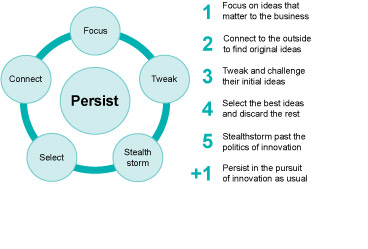6 Becoming an innovation architect
Your primary job as a leader is not to innovate; it is to become an innovation architect, creating a work environment that helps your people engage in the key innovation behaviors as part of their daily work.
In their 2013 book, Innovation as Usual, Miller and Wedell-Wedellsborg argue that for leaders, being an Innovation Architect is less about doing and more about supporting others as they engage in creative and innovative activities. An Innovation Architect, they assert, is ‘a person that makes other people innovate by changing the environment they work in’ (original emphasis; 2013a, p. vii). In order to do this, the innovation architect should facilitate the emergence of creativity and innovation so that it becomes what people usually do. Everyday organisational life should be creative and innovative:
To support this, Miller and Wedell-Wedellsborg (2013) emphasise three key ideas which anyone seeking to lead innovation should bear in mind:
- being a leader of innovation is different to being an innovator
- innovation should be ongoing within the organisation’s daily work, rather than just at special times of the year or only by specific people
- the focus for leaders should not be on changing people, but rather on changing the environment in which people work.
(Adapted from Miller and Wedell-Wedellsborg, 2013)
But how should leaders do this?
Miller and Wedell-Wedellsborg emphasise core leadership practices that could support innovation. These are the ‘5+1 keystone behaviours of innovation to promote in others’:
- Focus on ideas that matter to the business
- Connect to the outside to find original ideas
- Tweak and challenge the initial ideas
- Select the best ideas and discard the rest
- Stealthstorm past the politics of innovation
- +1 Persist in the pursuit of innovation as usual
(Miller and Wedell-Wedellsborg, 2013)
Synergy is crucial to securing success. The whole should exceed the sum of its parts and establish a virtuous cycle of self-sustaining innovation: 5+1 should equal much more than 6.

